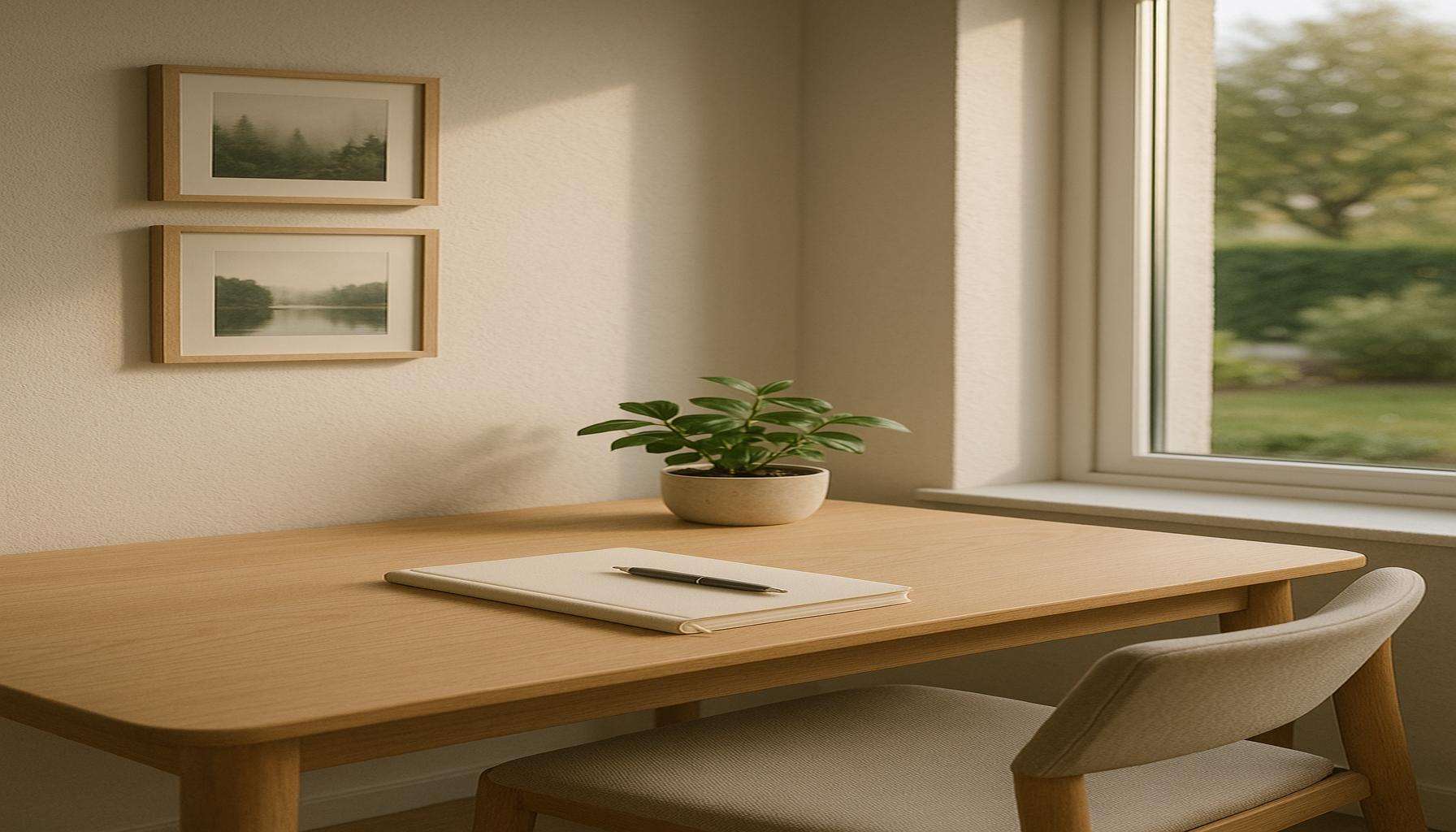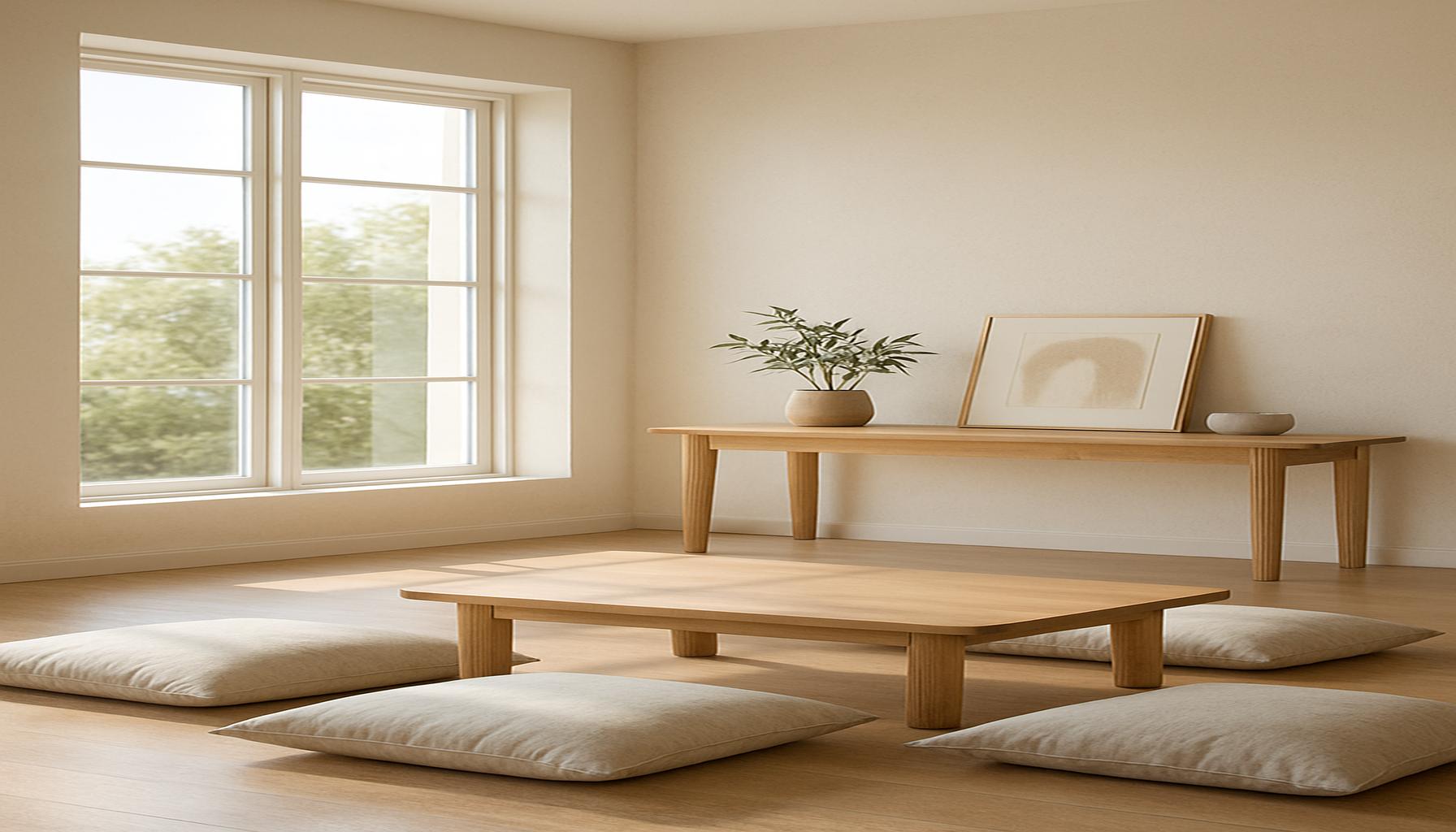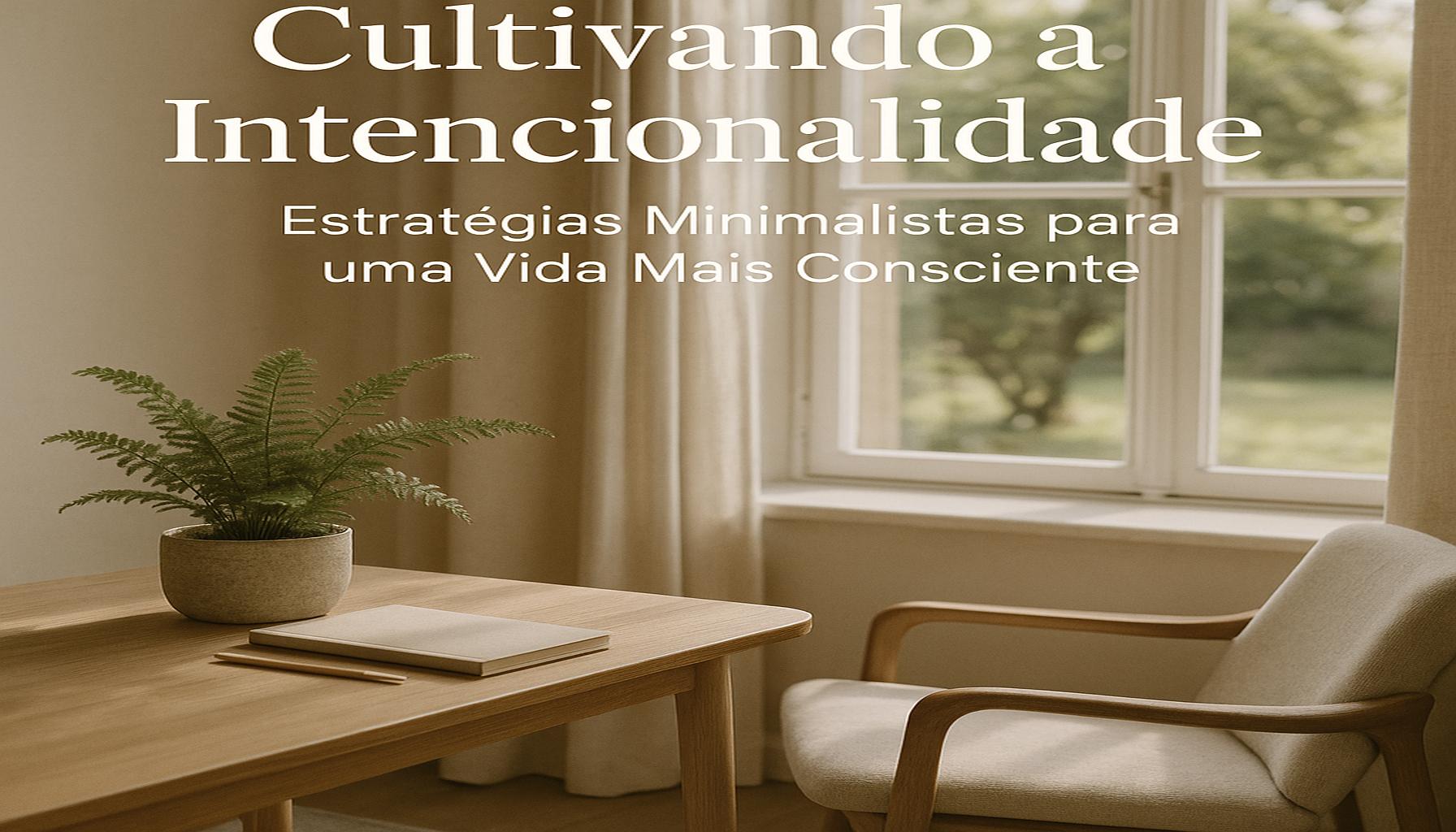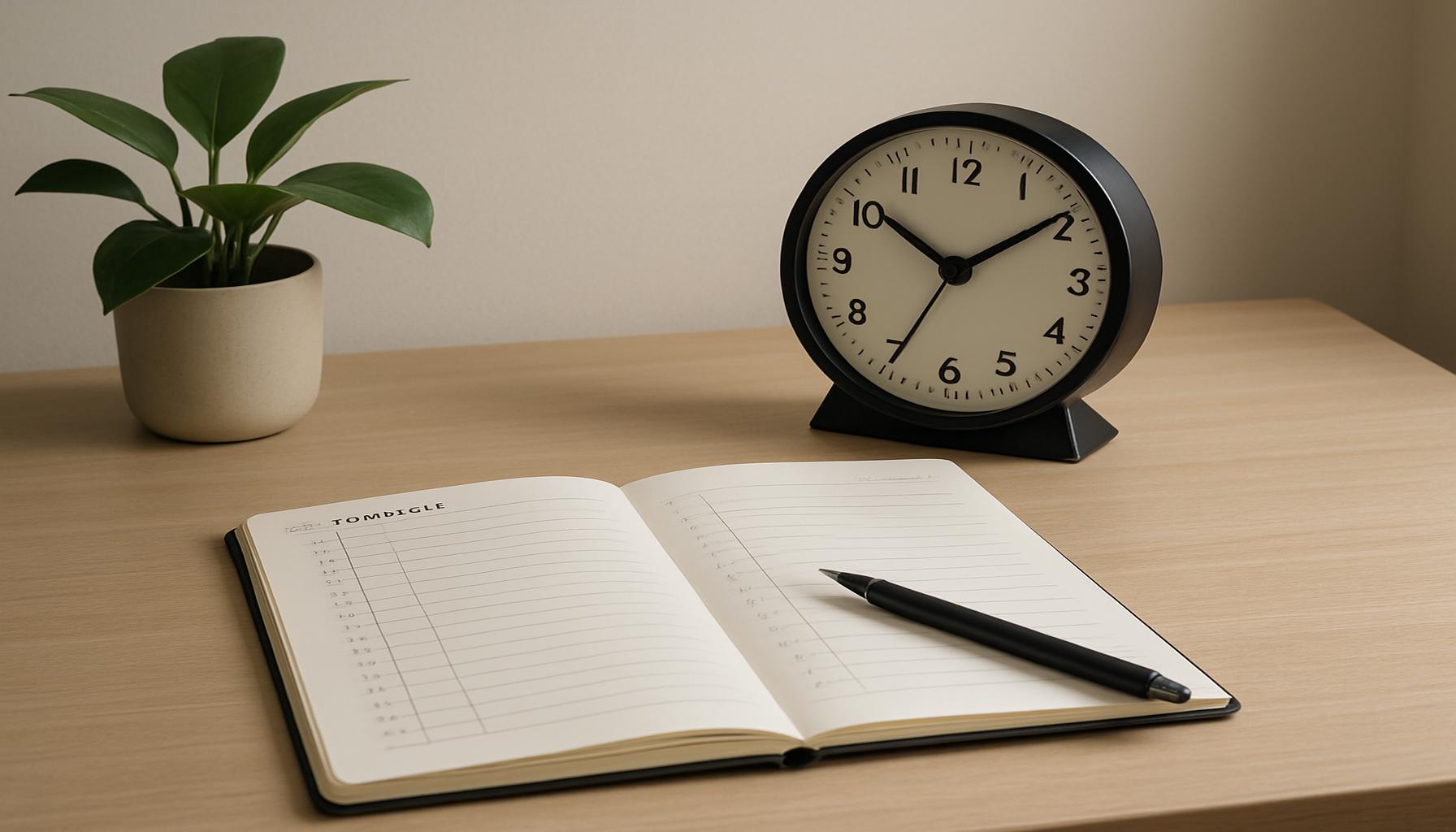Developing an Intentional Mindset: Minimalism Practices to Increase Productivity and Reduce Stress

Understanding Minimalism in a Modern Context
In a society where consumerism is encouraged, and social media often glorifies accumulation, the principles of minimalism can feel revolutionary. As individuals strive to carve out meaningful lives, minimalism provides structured yet liberating guidance through intentional living. This philosophy emphasizes the significance of focusing on what adds value, urging a deeper examination of both our material possessions and daily commitments.
Consider the concept of reduced clutter. Studies show that a disorganized environment can lead to increased feelings of stress, anxiety, and even lower productivity. For instance, a survey conducted by the National Sleep Foundation revealed that nearly 60% of Americans report not sleeping well due to their cluttered living spaces. By adopting minimalism, individuals often find that an organized home correlates with an organized mind, fostering a sense of calm and readiness to tackle daily challenges.
Enhanced focus is another key benefit often highlighted in minimalism discussions. In our digitally connected age, distractions abound. With emails pinging, notifications buzzing, and endless media vying for attention, it’s easy to scatter one’s focus. By streamlining one’s environment—be it a home or workspace—individuals can concentrate more effectively on their tasks. Simple practices, such as designating specific areas for work and relaxation, can create boundaries that uphold focus and creativity.
The impact of minimalism extends into increased productivity, as one begins to eliminate non-essential tasks and possessions from their life. When priorities are simplified, people often discover greater energy to devote to the actions that truly matter—those that align with their personal and professional goals. For example, a tech professional might choose to declutter their workspace to enhance their programming efficiency, allowing for a seamless workflow and reduced frustration.
Finally, embracing a minimalistic lifestyle often leads to less stress. As individuals learn to let go of unnecessary items and obligations, they can significantly alleviate feelings of overwhelm. Engaging in practices such as mindfulness meditation or scheduled digital detox periods encourages a deeper connection with oneself, allowing room for reflection and growth. As a result, many report improved emotional wellbeing and resilience amidst life’s challenges.

Across the United States, countless individuals have embarked on their minimalism journey, seeking to align their lives with their core values and aspirations. This resurgence is more than a trend; it’s a movement toward intentional living that advocates for clarity and purpose. As we transition into a deeper exploration of practical strategies, expect to unveil transformative practices that can reinvigorate your productivity and harmony.
Joining this enlightening journey may very well illuminate the path to a more fulfilled and intentional existence. By implementing minimalistic practices into your day-to-day life, a newfound clarity is not just a possibility—it can become your reality.
DISCOVER MORE: Click here to unlock digital decluttering tips
Transforming Your Space: Decluttering for Clarity
Adopting a minimalist approach in your living and working environments is one of the most effective strategies for embracing an intentional mindset. The first step in this transformative journey is decluttering, which involves a critical reassessment of what you truly need in your life. Researchers have identified that our surroundings can significantly affect our mindset and productivity, and a clean, organized space often leads to clearer thinking and reduced stress levels.
According to a study by the University of Southern California, individuals working in cluttered environments often report feelings of frustration, which can stunt creativity and work performance. In contrast, those in minimalist spaces report enhanced focus and a stronger sense of purpose. By minimizing distractions and fostering an environment conducive to productivity, individuals can reconnect with their goals and aspirations.
To successfully declutter and create a more intentional space, consider implementing these steps:
- Assess your belongings: Take inventory of what items you own. Challenge yourself to evaluate whether each item serves a purpose or brings you joy.
- Set a timeline: Make decluttering a structured process with deadlines. For instance, aim to tackle one room or area per week.
- Create designated zones: Allocate specific areas for specific activities, such as work, relaxation, and hobbies. This separation promotes a focused sense of purpose where you work and unwind.
- Practice the ‘one in, one out’ rule: To prevent accumulation, commit to removing one item from your home each time you bring in something new.
Furthermore, engaging in decluttering doesn’t solely apply to physical spaces. The digital realm also deserves attention. With the average American spending over 10 hours a day consuming digital media, an organized online presence is crucial. Streamlining your email inbox, optimizing your social media feeds, and organizing digital files are all steps that can enhance your productivity.
Another notable aspect of embracing minimalism lies in mindful consumption. In our fast-paced society, it is easy to fall into the trap of impulsive buying and overcommitment. By adopting a more intentional approach to what you bring into your life, you can better align your environment with your personal values. Consider asking yourself these questions before making a new purchase or commitment:
- Does this align with my goals or values?
- Will this bring me long-term happiness or fulfillment?
- Am I making this choice out of obligation or genuine desire?
By implementing these strategies, you can begin to create a physical and mental environment that supports your newfound intentional mindset. This gradual transition not only aids in managing stress but also sets a solid foundation for increased productivity, enabling you to reclaim your focus and energy for what truly matters in your life.
Embracing Minimalism for Clarity and Focus
Developing an intentional mindset through minimalism practices offers a pathway to greater productivity and reduced stress levels. By reducing physical and visual clutter, individuals can achieve enhanced clarity of thought and focus, allowing creative ideas to flourish. The principle behind minimalism is not merely about decluttering but about making conscious choices regarding your environment and commitments. Removing distractions paves the way for a more focused work ethic. Research has shown that individuals who adopt minimalist principles often experience improved mental clarity and decision-making abilities.
Practical Minimalism Techniques
Implementing minimalism in everyday life can take various forms. One might start by identifying core values and eliminating activities that do not align with these principles. Techniques such as the 20/20 rule, which involves assessing if an item can be replaced within $20 and a 20-minute timeframe, can help facilitate the decluttering process. Furthermore, establishing a no screen time policy during certain periods enhances focus and allows for deeper engagement in activities that matter most. Research indicates that individuals practicing such techniques report significantly lower stress levels.
| Category | Details |
|---|---|
| Mental Clarity | Reduced distractions foster deeper cognitive processes. |
| Emotional Well-Being | Practicing minimalism can lower stress levels and promote a sense of control. |
By understanding and embracing the core philosophies of minimalism, individuals not only enhance their work productivity but also cultivate a lifestyle that prioritizes well-being and intentional living. This guiding principle serves as both a personal and professional tool, enabling individuals to navigate their lives with greater ease and purpose.
DISCOVER MORE: Click here to learn about minimalist living
Intentional Time Management: Structuring Your Day for Success
Another crucial element in developing an intentional mindset is the effective management of your time. In today’s fast-paced environment, distractions are abundant, making it easy to drift away from your goals. Adopting a minimalism approach to time management involves simplifying your schedule to prioritize your most meaningful tasks, ultimately leading to enhanced productivity and decreased stress.
Research indicates that one of the leading causes of stress is poor time management, which can result in feelings of overwhelm and anxiety. In fact, a study from the American Psychological Association highlights that individuals who struggle with time management often have lower levels of productivity and greater difficulty in achieving work-life balance. By implementing minimalist time management methods, you can refocus your energy on what truly matters.
Here are some practical strategies for structuring your day intentionally:
- Prioritize your tasks: Use the Eisenhower Matrix to categorize tasks based on urgency and importance. This method helps you to visualize what needs immediate attention and what can be scheduled for later or delegated.
- Time block your work: Set specific blocks of time during your day dedicated to certain tasks or projects. This structured approach can help minimize distractions and enhance focus, as you allocate time to work on specific goals.
- Limit your commitments: Learning to say no is a powerful skill. By only agreeing to commitments that align with your personal and professional goals, you cultivate a more manageable schedule that reflects your values.
- Implement regular breaks: The Pomodoro Technique, which involves working for 25 minutes and taking a five-minute break, can boost overall productivity. These breaks are essential for giving your mind the time it needs to recharge and refocus.
Moreover, the impact of technology on our time management efforts cannot be overlooked. While technology offers numerous productivity tools, it can also become a source of distraction. Consider digitizing your to-do lists using apps like Trello or Todoist, which can streamline your tasks and help you to maintain focus. However, be mindful to limit unnecessary notifications that can cause interruptions.
Emotional Minimalism: Cultivating Healthy Relationships and Mindsets
In addition to organizing your physical space and managing your time, it is essential to apply the principles of minimalism to your emotional landscape. Emotional minimalism involves consciously assessing the relationships and mindsets that occupy your mental space. Unhealthy relationships and negative thought patterns can contribute significantly to stress and inhibit productivity.
Research from the University of California indicates that maintaining only a handful of deep, meaningful connections can lead to greater fulfillment than trying to manage a large social network. Consider adopting the practice of identifying and nurturing only those relationships that bring genuine joy and support. This can be done through:
- Regular check-ins: Schedule monthly or quarterly evaluations of your relationships and the impact they have on your life. This awareness allows you to discern which connections enrich you and which might be left behind.
- Establishing boundaries: Create boundaries with individuals who drain your energy or require excessive emotional labor, safeguarding your mental well-being.
- Practicing gratitude: Cultivate a mindset of gratitude by intentionally reflecting on positive relationships. Studies have shown that expressing gratitude can enhance your emotional resilience and overall happiness.
By embracing these strategies in both time management and emotional well-being, you can significantly reduce unnecessary stress and enhance your productivity. The combination of decluttering your physical space, managing your time intentionally, and cultivating healthy emotional environments creates a holistic approach to fostering an intentional mindset that aligns with your personal and professional aspirations.
DISCOVER MORE: Click here to enhance your daily routine
Conclusion: Embracing Minimalism for Lasting Change
In our journey towards developing an intentional mindset, the principles of minimalism serve as a powerful guide to breaking free from the chaos of modern life. By simplifying our physical surroundings, structuring our time effectively, and nurturing our emotional landscapes, we create an environment that is conducive to both increased productivity and reduced stress.
The strategies outlined in this article—from prioritizing tasks to establishing healthy boundaries—are not mere tips but essential components of a holistic approach to well-being. Adopting an intentional mindset goes beyond just decluttering; it requires an ongoing commitment to evaluate what truly matters in our lives and to make conscious choices that reflect our core values.
As you incorporate these minimalist practices into your daily routine, you may notice a shift in your perspective. Moments of tranquility and clarity can emerge, allowing for heightened creativity and focus. More importantly, relationships marked by mutual support and gratitude can flourish, fostering emotional resilience that is essential in today’s demanding world.
In conclusion, the path to developing an intentional mindset through minimalism is not a destination but a continual journey. As you explore these practices, consider seeking further resources that deepen your understanding of minimalism and mindfulness, such as books, workshops, and online communities. By committing to this process, you can cultivate not just a more organized lifestyle but also a fulfilling and enriching existence.


